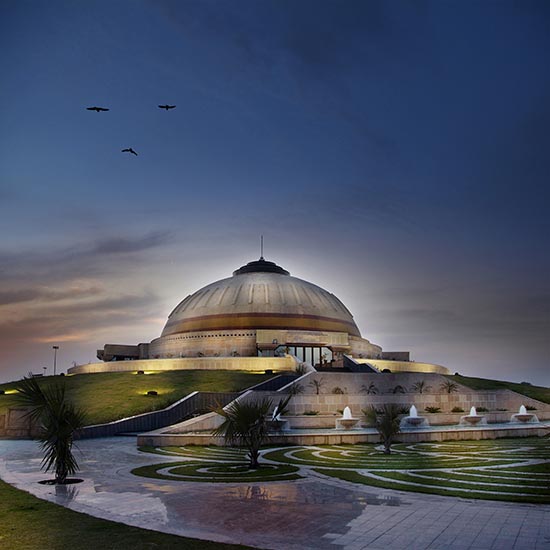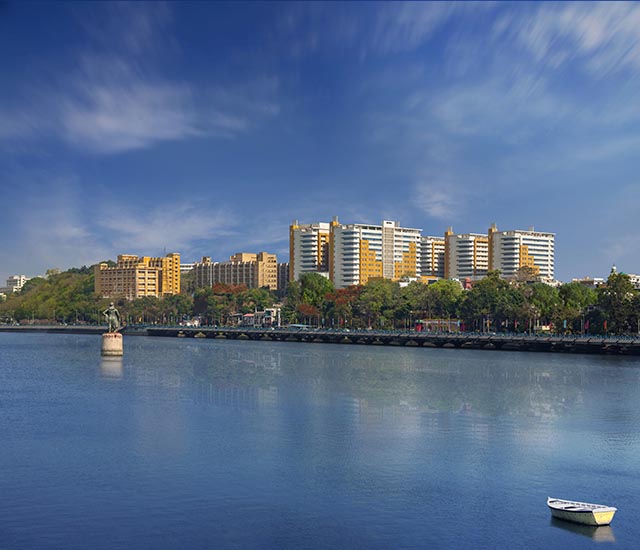![PD[1] | Image © RKDS](https://hawmagazine.com/wp-content/uploads/2012/11/PD1.jpg)
![PD[2] | Photograph by Saurabh Pandey PD[2] | Photograph by Saurabh Pandey](http://www.howarchitectworks.com/wp-content/uploads/2012/11/PD2.jpg)
Architectural Group: Romi Khosla Design Studio
Chief Architects: Romi Khosla, Martand Khosla
Clients Name: The Sir Sobha Singh Public Charitable Trust
Design Team: Rajnish Pant
Project Location: Old Delhi, India
Project Year: 2009-2012
Project Area: 1093.5 sq. mt
Project Type: Institutional
Image Copyright/Courtesy: Saurabh Pandey
News Source: From the office of RKDS
Designed by architects Romi Khosla and Martand Khosla, this state of the art building has been donated to the Municipal Corporation of Delhi by The Sir Sobha Singh Public Charitable trust. The Trust got in touch with the architects because of their national and international reputation of building modern buildings for the very poor.
Polyclinic for the Poorest
The poor in and around Lahori gate area are in very bad health due to drug addiction, physical incapability and social desertion. Some have critical diseases like H.I.V. and T.B. They are homeless because they simply cannot afford shelter. Barely managing to feed themselves, they pull rickshaws or engage in casual daily labor. Some are sex workers and others get by through begging.

[quote style=”1″]The Polyclinic will serve these poor people in the neighborhood who cannot afford to get medical treatment and check-ups. The Polyclinic will be a day care referral medical relief center…[/quote]
Project Hurdles
Completing the Polyclinic in this dense and crowded locality was not easy. The Polyclinic site had a dilapidated Chungi building that had provided shelter for the homeless and was a hub of drug related activities. Fully aware of these problems, the architects worked closely with the local community exposing those selves, at times, to the wrath of the drug addicts.
The adjacent mosque authorities too were suspicious of the intentions of the project until it was explained to them that the polyclinic was for the very poor who lived in the area. The location of the polyclinic abuts Railway land and their goodwill too was necessary for the success of the project.
Description of the Polyclinic
This simple elegant building is four floors high and is equipped with a hospital lift. A large area in the basement provides ample space for a modern pathological laboratory. The ground floor has the reception as well as the Out Patient Department cubicles for the day time doctors and consultants.
The Polyclinic has four floors each of 200 sq meters where laboratories, reception, consultation rooms, day time wards, doctors and nurse stations are situated. The fully glazed front facade provides a transparent view into the building which invites the poor to enter within. Reception staff will be able to spot hesitant patients and encourage them to come within. Once they have been registered, the patients would proceed to the first floor for the treatment. This treatment area requires more privacy and has thus been shielded from view by colored aluminum louvers provide a visual shield but allow full fresh air ventilation. A lift designed for carrying stretcher patients has also been installed for emergency treatment.
![PD[1] | Photograph by Saurabh Pandey PD[1] | Photograph by Saurabh Pandey](http://www.howarchitectworks.com/wp-content/uploads/2012/11/PD1.jpg) The choice of primary colors that combine the yellow and blue louvered facade and brightly ventilated areas seem radical for this forgotten area of Delhi. Yet these combinations of colors announce the presence of a contemporary treatment center for the poorest of the poor. Inside the building, the glass partitioned consulting rooms and the bright ventilated waiting spaces, have created a unique treatment environment for the poorest of patients. This is a treatment center where the infected and addicted will get not only medical attention but also counseling.
The choice of primary colors that combine the yellow and blue louvered facade and brightly ventilated areas seem radical for this forgotten area of Delhi. Yet these combinations of colors announce the presence of a contemporary treatment center for the poorest of the poor. Inside the building, the glass partitioned consulting rooms and the bright ventilated waiting spaces, have created a unique treatment environment for the poorest of patients. This is a treatment center where the infected and addicted will get not only medical attention but also counseling.
The entire project has been funded by a public charitable Trust established by the most significant contractor to build the Lutyens capitol complex of Delhi. This is their second donation to the citizens of Delhi specifically for the benefit of the poorest citizens. The first project too was designed by Romi Khosla and Martand Khosla and provided accommodation for poor relatives of the poorest patients who came to care for the patients admitted to the public hospital.
This facility was awarded the world Architecture Award in 2009.

![PD[5] | Photograph by Saurabh Pandey PD[5] | Photograph by Saurabh Pandey](http://www.howarchitectworks.com/wp-content/uploads/2012/11/PD5.jpg)
![PD[3] | Photograph by Saurabh Pandey PD[3] | Photograph by Saurabh Pandey](http://www.howarchitectworks.com/wp-content/uploads/2012/11/PD3.jpg)
![PD[10] | Photograph by Saurabh Pandey PD[10] | Photograph by Saurabh Pandey](http://www.howarchitectworks.com/wp-content/uploads/2012/11/PD10.jpg)
![PD[8] | Photograph by Saurabh Pandey PD[8] | Photograph by Saurabh Pandey](http://www.howarchitectworks.com/wp-content/uploads/2012/11/PD8.jpg)
![PD[9] | Photograph by Saurabh Pandey PD[9] | Photograph by Saurabh Pandey](http://www.howarchitectworks.com/wp-content/uploads/2012/11/PD9-150x150.jpg)
![PD[7] | Photograph by Saurabh Pandey PD[7] | Photograph by Saurabh Pandey](http://www.howarchitectworks.com/wp-content/uploads/2012/11/PD7-150x150.jpg)
![PD[11] | Photograph by Saurabh Pandey PD[11] | Photograph by Saurabh Pandey](http://www.howarchitectworks.com/wp-content/uploads/2012/11/PD11-150x150.jpg)
![PD[4] | Photograph by Saurabh Pandey PD[4] | Photograph by Saurabh Pandey](http://www.howarchitectworks.com/wp-content/uploads/2012/11/PD41-150x150.jpg)
![PD[12] | Photograph by Saurabh Pandey PD[12] | Photograph by Saurabh Pandey](http://www.howarchitectworks.com/wp-content/uploads/2012/11/PD12-150x150.jpg)
![PD[6] | Photograph by Saurabh Pandey PD[6] | Photograph by Saurabh Pandey](http://www.howarchitectworks.com/wp-content/uploads/2012/11/PD61-150x150.jpg)


